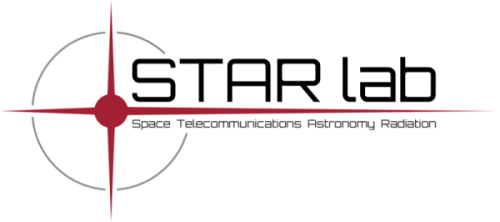| Title | CubeSat Deformable Mirror Demonstration Mission |
| Publication Type | Conference Paper |
| Year of Publication | 2014 |
| Authors | Marinan, A, Cahoy, K |
| Conference Name | 2014 International Symposium on Optomechatronic Technologies (ISOT) |
| Keywords | 32-actuator Boston Micromachines Mini deformable mirror, 3U CubeSat bus, Adaptive optics, artificial satellites, astronomical instruments, bright stars, Calibration, coronagraphic space telescopes, Cube Sat, CubeSat Deformable Mirror Demonstration Mission, Detectors, exoplanet direct imaging, focal plane sensor, focal planes, high-actuator-count MEMS deformable mirrors, high-contrast imaging applications, internal laser illumination, MEMS Deformable Mirror CubeSat Testbed platform, MEMS deformable mirrors, Microactuators, microsensors, mirrors, mission design, nanosatellite demonstration, on-orbit performance, optical experiments, optical imaging, optical payload, Optical sensors, payload architecture, Payloads, Shack Hartmann wavefront sensor, technology advancement, wavefront control systems, Wavefront sensing, wavefront sensing technology, wavefront sensors |
| Abstract | Coronagraphic space telescopes require wave front control systems for high-contrast imaging applications such as exoplanet direct imaging. High-actuator-count MEMS deformable mirrors (DM) are a key element of these wave front control systems, yet they have not been flown in space long enough to characterize their on-orbit performance. The MEMS Deformable Mirror Cube Sat Test bed is a conceptual nanosatellite demonstration of MEMS DM and wave front sensing technology. The test bed platform is a 3U Cube Sat bus. Of the 10 ×{} 10 ×{} 34.05 cm (3U) available volume, a 10 ×{} 10 ×{} 15 cm space is reserved for the optical payload. The main purpose of the payload is to characterize and calibrate the on-orbit performance of a MEMS deformable mirror over an extended period of time (months). Its design incorporates both a Shack Hartmann wave front sensor (internal laser illumination), and a focal plane sensor (used with an external aperture to image bright stars). We baseline a 32-actuator Boston Micromachines Mini deformable mirror for this mission, though the design is flexible and can be applied to mirrors from other vendors. We present the mission design and payload architecture and discuss the intended performance of the optical experiments. |
| DOI | 10.1109/ISOT.2014.40 |
